ITOpsTimes Features Ryan’s Article on Balancing AI’s Role in Sustainability: A Dual-Edged Sword
ITOpsTimes, an online publication, dedicated to increasing brand awareness among development and IT operations teams, has published Josh Ryan‘s article, “Balancing AI’s Role in Sustainability: A Dual-Edged Sword.”
Balancing AI’s role in sustainability: A dual-edged sword
Artificial intelligence (AI) is often hailed as a transformative force poised to reshape industries, economies, and societies. In recent years, the technology industry has been abuzz with discussions about AI’s potential to revolutionize various sectors, from healthcare to finance. Amidst this excitement, one area stands out for its promise and urgency: sustainability. However, as we delve deeper into AI’s applications in promoting sustainability, we must also confront the environmental costs associated with this technology.
AI’s Positive Impact on Sustainability
AI’s potential to enhance sustainability efforts is vast and varied. Here are a few ways AI is contributing to sustainable practices:
- Energy Optimization: AI algorithms are increasingly being used to optimize energy consumption in buildings, factories, and even entire cities. By predicting energy demand and adjusting usage in real-time, AI can help reduce wastage and improve efficiency. For instance, smart grids powered by AI can balance energy loads more effectively, integrating renewable energy sources and reducing reliance on fossil fuels.
- Predictive Maintenance: AI-driven predictive maintenance can significantly reduce the environmental impact of industrial operations. By predicting equipment failures before they occur, companies can perform maintenance only when necessary, minimizing downtime and extending the lifespan of machinery. This not only saves resources but also reduces waste and emissions associated with manufacturing and transporting replacement parts.
- Operational Efficiency: AI can streamline operations across various sectors, from agriculture to transportation. In agriculture, AI-powered tools can optimize irrigation, reduce pesticide use, and enhance crop yields. In transportation, AI can optimize route planning and logistics, reducing fuel consumption and emissions. These improvements contribute to a more sustainable use of resources and a lower environmental footprint.


